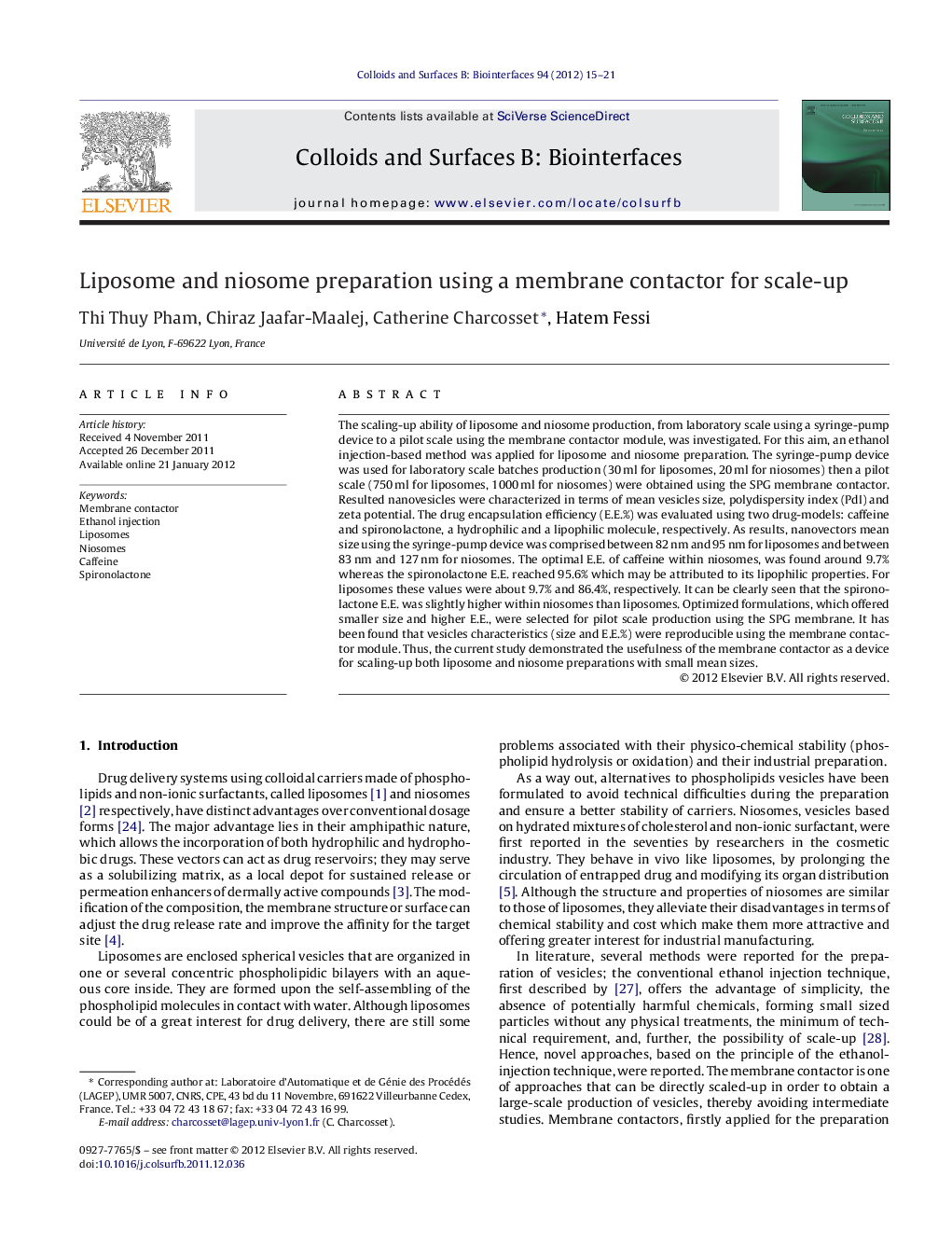| Article ID | Journal | Published Year | Pages | File Type |
|---|---|---|---|---|
| 600826 | Colloids and Surfaces B: Biointerfaces | 2012 | 7 Pages |
The scaling-up ability of liposome and niosome production, from laboratory scale using a syringe-pump device to a pilot scale using the membrane contactor module, was investigated. For this aim, an ethanol injection-based method was applied for liposome and niosome preparation. The syringe-pump device was used for laboratory scale batches production (30 ml for liposomes, 20 ml for niosomes) then a pilot scale (750 ml for liposomes, 1000 ml for niosomes) were obtained using the SPG membrane contactor. Resulted nanovesicles were characterized in terms of mean vesicles size, polydispersity index (PdI) and zeta potential. The drug encapsulation efficiency (E.E.%) was evaluated using two drug-models: caffeine and spironolactone, a hydrophilic and a lipophilic molecule, respectively. As results, nanovectors mean size using the syringe-pump device was comprised between 82 nm and 95 nm for liposomes and between 83 nm and 127 nm for niosomes. The optimal E.E. of caffeine within niosomes, was found around 9.7% whereas the spironolactone E.E. reached 95.6% which may be attributed to its lipophilic properties. For liposomes these values were about 9.7% and 86.4%, respectively. It can be clearly seen that the spironolactone E.E. was slightly higher within niosomes than liposomes. Optimized formulations, which offered smaller size and higher E.E., were selected for pilot scale production using the SPG membrane. It has been found that vesicles characteristics (size and E.E.%) were reproducible using the membrane contactor module. Thus, the current study demonstrated the usefulness of the membrane contactor as a device for scaling-up both liposome and niosome preparations with small mean sizes.
Graphical abstractFigure optionsDownload full-size imageDownload as PowerPoint slideHighlights► We prepared liposomes and niosomes using the ethanol injection method. ► The preparations were scale-up using a SPG membrane device. ► Liposomes and niosomes were loaded with two model drugs: caffeine and spironolactone. ► The optimal encapsulation efficiency of caffeine was found around 10% both for liposomes and niosomes. ► The encapsulation efficiency of spironolactone was slightly higher for niosomes (95%) than liposomes (86%).
